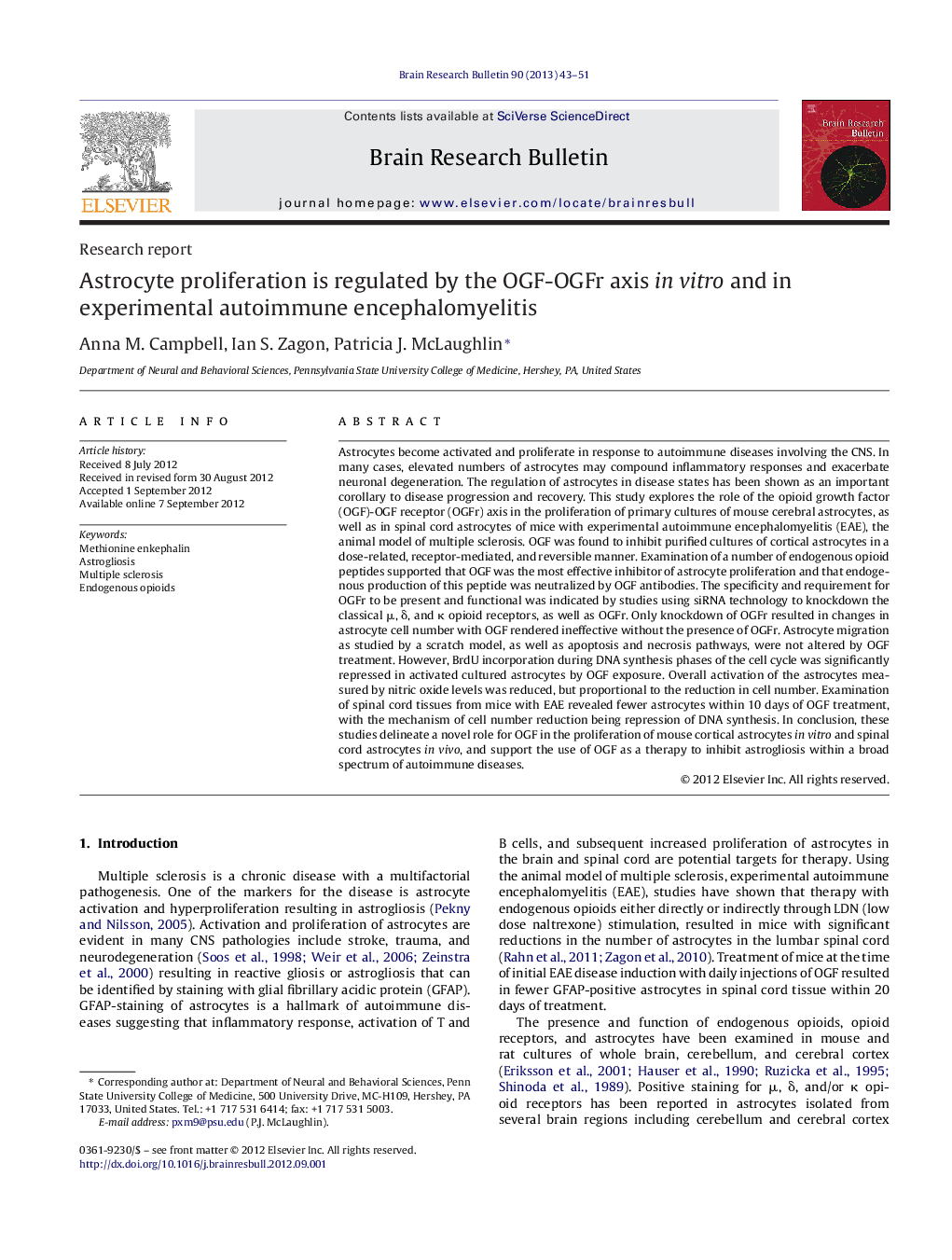| کد مقاله | کد نشریه | سال انتشار | مقاله انگلیسی | نسخه تمام متن |
|---|---|---|---|---|
| 6261855 | 1613265 | 2013 | 9 صفحه PDF | دانلود رایگان |

Astrocytes become activated and proliferate in response to autoimmune diseases involving the CNS. In many cases, elevated numbers of astrocytes may compound inflammatory responses and exacerbate neuronal degeneration. The regulation of astrocytes in disease states has been shown as an important corollary to disease progression and recovery. This study explores the role of the opioid growth factor (OGF)-OGF receptor (OGFr) axis in the proliferation of primary cultures of mouse cerebral astrocytes, as well as in spinal cord astrocytes of mice with experimental autoimmune encephalomyelitis (EAE), the animal model of multiple sclerosis. OGF was found to inhibit purified cultures of cortical astrocytes in a dose-related, receptor-mediated, and reversible manner. Examination of a number of endogenous opioid peptides supported that OGF was the most effective inhibitor of astrocyte proliferation and that endogenous production of this peptide was neutralized by OGF antibodies. The specificity and requirement for OGFr to be present and functional was indicated by studies using siRNA technology to knockdown the classical μ, δ, and κ opioid receptors, as well as OGFr. Only knockdown of OGFr resulted in changes in astrocyte cell number with OGF rendered ineffective without the presence of OGFr. Astrocyte migration as studied by a scratch model, as well as apoptosis and necrosis pathways, were not altered by OGF treatment. However, BrdU incorporation during DNA synthesis phases of the cell cycle was significantly repressed in activated cultured astrocytes by OGF exposure. Overall activation of the astrocytes measured by nitric oxide levels was reduced, but proportional to the reduction in cell number. Examination of spinal cord tissues from mice with EAE revealed fewer astrocytes within 10 days of OGF treatment, with the mechanism of cell number reduction being repression of DNA synthesis. In conclusion, these studies delineate a novel role for OGF in the proliferation of mouse cortical astrocytes in vitro and spinal cord astrocytes in vivo, and support the use of OGF as a therapy to inhibit astrogliosis within a broad spectrum of autoimmune diseases.
⺠First evidence to demonstrate presence of the OGF-OGFr axis in cultured mouse cerebral astrocytes. ⺠OGF inhibits cell proliferation in a receptor-mediated, dose-dependent, reversible manner that does not involve apoptosis. ⺠The specific opioid receptor required for OGF action is OGFr; the classical μ, δ, and κ opioid receptors do not mediate growth. ⺠OGF inhibits nitric oxide production by cultured astrocytes. ⺠In vivo, OGF inhibits proliferation and prevents astrogliosis in spinal cord tissue from mice with EAE.
Journal: Brain Research Bulletin - Volume 90, January 2013, Pages 43-51